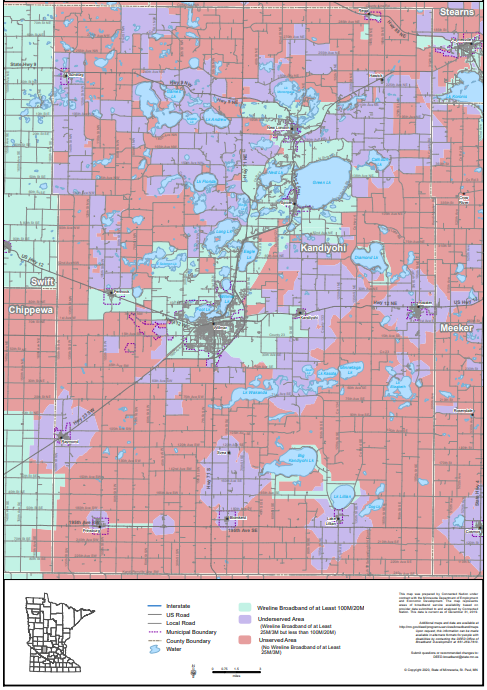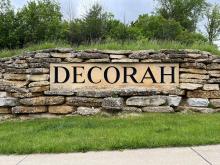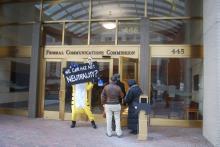
Like numerous U.S. counties, large segments of Kandiyohi County, Minnesota (pop. 44,000) lack access to affordable Internet service at modern speeds. So like many underserved communities, the county—situated about ninety miles west of Minneapolis—is looking to take advantage of a once-in-a-lifetime collision of funding opportunities to help finance a massive fiber broadband expansion across numerous county townships.
A recent survey by the county unsurprisingly reveals that residents are greatly annoyed by the lack of affordable Internet access options, with 64 percent of locals saying they’re dissatisfied with the Internet service provided by regional monopolies.
Ten Projects on Tap
Hoping to address the shortcoming, Kandiyohi County and the City of Willmar Economic Development Commission have been working on ten different projects to shore up Internet access around the county.
Some of the proposed projects involve partnerships with national monopoly providers like Charter Communications, but others will involve the county and a local cooperative doing the heavy lifting. The county had hoped to fund the projects with a combination of subscriber fees, American Rescue Plan funds, NTIA grants, and upcoming Minnesota state grants.
The first major project closest to being “shovel ready” is a $10 million fiber-to-the-home (FTTH) project in partnership with the Federated Telephone Cooperative of Morris. Federated is expected to finance twenty-five percent of the overall project, with new subscribers expected to pay about $1,250 per household to connect to the gigabit-capable network.

Kandiyohi County is also eyeing the unprecedented federal funding opportunities created by both the recently-passed infrastructure bill and Covid relief efforts. All told, the country hopes to combine a large chunk of the $8.3 million it’s receiving from the American Rescue Plan, with money from the state’s looming Border to Border development grants.
Seeking Clarity on Grant Funding
Project leaders hope to use Rescue Plan money to fund the 50% local match required of the state’s Border-to-Border broadband grant, but recently expressed concerns to the West Central Tribune that project rules may not allow it. As such, the projects remain on temporary hold until the rules governing new state grants come into clear focus.
While the county has said it is unclear at this moment on whether Rescue Plan funds can serve as a local match, we wrote in January that the revised Treasury Rules defined a wide array of acceptable uses in flexible ways for counties.
Both the Treasury Department and the Minnesota Office of Broadband Development guidelines, therefore, look to clearly state that there would be nothing wrong with contributing a local match via Rescue Plan funds.

“We are making progress, though not as quickly as we all would like,” Kandiyohi County Commissioner Roger Imdieke told ISLR. Imdieke noted that four of the smaller projects being proposed by the county (covering roughly 125 homes) won’t require state grants.
Meanwhile, an announcement late last month by the Commerce Department indicates that Kandiyohi county was not among the areas selected to receive an NTIA grant.
“The NTIA never provided an official notice to us so I called and left a message and am waiting to hear a reply confirmation and possible next steps,” Larry Kleindl, Kandiyohi County Administrator told ISLR. “Really frustrating as we have put a lot of time and effort into both of these programs,” he said of the state and federal grant application process.
Battling Broadband Monopolies
As ILSR has reported, many communities that have applied for NTIA grants have also found themselves mired in costly challenges by entrenched monopolies, who utilize unreliable U.S. broadband mapping data to falsely claim many target areas are already served.
Past projects in Kandiyohi County have been scuttled for what the county claims are a variety of reasons, including an overly-complicated public sign up process, and first right of refusal clauses in state grants that let regional monopolies block grants—again often based on artificially inflated claims of existing service coverage.

County leaders hope that past experiences are helping to shape new projects, including a $19 million fiber network to the Colfax, Lake Andrew, and Norway Lake Townships, as well as a second, $32 million partnership with Federated Telephone Cooperative to deploy gigabit-capable fiber to seven additional Kandiyohi County townships.
Last month Minnesota State Representatives visited the Kandiyohi County Board of Commissioners, where county leaders urged them to remove first right of refusal language from the state grant process, and make it easier for more rural areas to qualify for state grants by reducing the 50 percent matching requirement for grant winners.
Inline image of Kandiyohi Courthouse courtesy of Wikimedia Commons, Attribution 3.0 Unported (CC BY 3.0)
Inline image of Kandiyohi broadband coverage map courtesy of the Blandin Foundation







